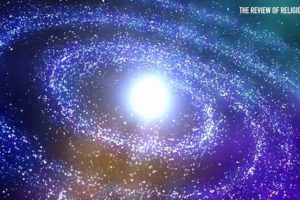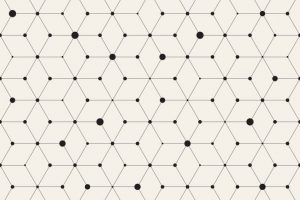
We all see it every day, as it looms overhead, shining down on us. But what do we really know about the sun?
In 15 Million Degrees: A Journey to the Centre of the Sun, Professor Lucie Green takes us to the heart of Earth’s closest star, delving deep into what we know about the sun as well as how we came to know it. Green, a solar physicist at University College London’s Mullard Space Science Laboratory, is well-placed to explain this rich history to the public, with regular appearances on the BBC’s Stargazing Live with Brian Cox, the Today programme, BBC Breakfast and Sky at Night. She has worked with the world’s major space agencies such as NASA and the European Space Agency, particularly on the Solar Orbiter mission, which is a planned sun-observing satellite that will perform close-up, high resolution studies of our sun and the inner heliosphere. She won the Royal Society’s Kohn Award for her work promoting public engagement with science. She sits on the Advisory Board for the Science Museum and is Chief Stargazer at the Society for Popular Astronomy.
The Review of Religions caught up with Dr Green at New Scientist Live 2017 to talk about her career, her interest in the sun and her interest in public engagement with science.
—————————————
Q) How did you first get involved in space science?
Space science to me was actually quite accidental. I was first of all interested in arts, so when I left school, I wanted to be an art therapist. But then I realised that wasn’t a career for me. So then I went back to my first love, which was physics and so it was through doing an undergraduate in physics that I realised space science is what I wanted to do. And it was sort of a gradual process of learning about the stars, then learning about our sun and then realising that in Britain we had a space programme and that I can get involved with that.
Q) Your main expertise is solar science and the title of your first book is 15 Million Degrees. What is it about this field that interests you in particular?
The sun I found absolutely fascinating, perhaps for three different reasons. Firstly, that is the only star that we can get up close to and see lots of detail—see what’s happening at the surface. Secondly, in the atmosphere we can make detailed measurements of its magnetic field and that turns out to be a very important activity of the sun, and so the physics of the sun. There is another aspect, which is that the sun is the most important object in the universe. For us it’s a star and a source of energy, sure, but more recently we found out that ‘space weather’ is also an important aspect of the sun. On the earth we are living inside the sun’s very extended atmosphere and variations in the sun’s atmosphere impact us here on the earth and that’s what we call ‘space weather’. And then the third thing is that the sun is a very beautiful object and I think it sort of satisfies the artist in me to be looking at these beautiful images of the sun. So it’s the aesthetics as well as the science.

Q) I believe you are involved in the future Solar Orbiter programme. Tell us more about it and what other projects you are involved in.
Solar Orbiter is the European mission to go to the sun and is being built right at this moment. There is a lot of British involvement and in my department we are involved with two of the instruments. One is called the solar wind analyser, which measures this extended atmosphere of the sun that sweeps out into the solar system. Secondly, we are also involved in an extreme ultraviolet (EUV) imaging telescope that will take pictures of the atmosphere of the sun. We will launch it in early 2019 and get close to the sun a few years later. So it’s really a mission that allows us to study the sun up close and personal to see what the atmosphere is like close in, how the atmosphere is controlled, and how it changes over time. But then other aspects of missions that I am interested in are related to space weather and we are working at the moment on a space weather mission. So the analogy is that we have weather satellites that allow us to forecast the conditions of the weather on the earth and the terrestrial atmosphere and what we want is a space weather monitor for Europe so that we can monitor the sun’s atmospheric changes and forecast space weather better. At the moment, we are working with the European space agency to develop the concept of that space weather mission. We call it the ‘Lagrange mission’ in reference to special points in the solar system where we want to put this spacecraft. If successful, depending upon continued funding and if Europe pulls together to work on it, then we should hopefully launch our space weather monitor in the 2020s.
Q) Brexit is affecting lots of companies on a different level, does it have any impact on the Solar Orbiter programme?
So for us Brexit is important but it doesn’t affect our work with the European Space Agency so we will still be a paid-up member of the European Space Agency and that’s the organisation that is developing the space weather monitor.
Q) What is your motivation for promoting science engagement consistently throughout your career?
I think partly it is because it is really good fun. I love to talk to people who also feel enthusiastic about astrophysics so there’s a personal and immediate reward from just sharing this enthusiasm. Then there is a bigger issue around ensuring that I, as a publicly funded person, make available to the public our findings, and encourage the next generations to do this work, girls in particular. I’m interested to show to young women that women can be scientists, engineers and mathematicians too.
Q) What have been the best moments of your career?
Oh, some of the best moments of my career? Well there are sort of two camps—one is when you see something in the data that you know nobody else has seen, so you come into work one day and you see the sun producing perhaps an amazing eruption and you know that nobody else has seen that dataset yet, and the other thing that I really enjoyed is doing operations on satellites. Because my department builds instruments that then get launched with ESA, NASA and other space agencies like the Japanese Space Agency, we have a duty and responsibility to operate these telescopes. So I have had a lot of fun working with NASA and the Japanese Space Agency doing satellite operations.
Q) Lastly, do you believe that religion can play a role in finding information about galaxies or the solar system?
So for me there are different approaches to the world and how we investigate the world around us. For me, my approach is that I want the data. I want observation and information that I can use to answer questions. But I know that for many of my colleagues the two aspects are very important and that they sit together and they do use religion for inspiration. For my perspective though, I am totally focussed on the observation and the scientific data that I can get.
……………………………………………………………..
About the Author: Musa Sattar has an MSc in Pharmaceutical Analysis from Kingston University and is also serving as Deputy Editor of the Science & Religion section.
………………………………………………………………




Add Comment